Bodies and Behaviors
Body Stats
Florida manatees are large, gray, aquatic mammals. Adult manatees are typically 9-10 feet long from snout to tail and weigh around 1,000 pounds; however, they may grow to over 13 feet long and weigh more than 3,500 pounds.
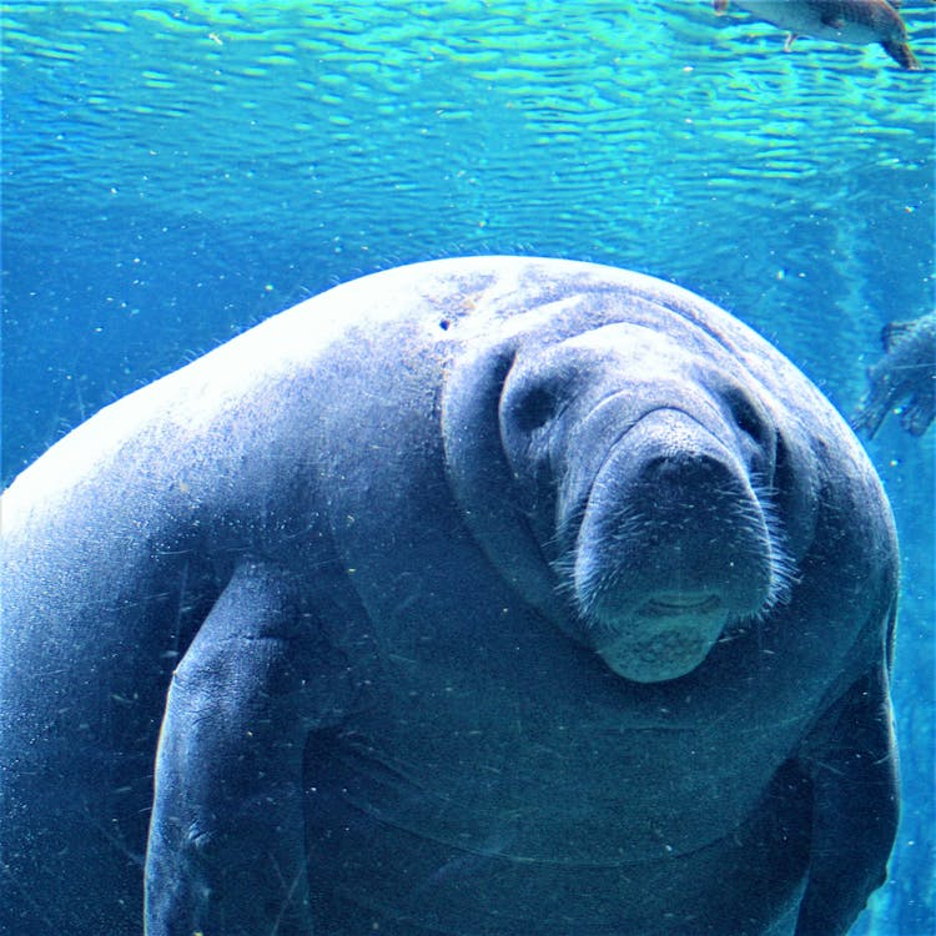
Algae often grows on the backs and tails of manatees, which makes their skin color appear green or brown. Barnacles (found mostly on coastal dwelling manatees) often leave round scars from attachment sites; movement from saltwater to freshwater habitats clears the animals of these saltwater hitchhikers.
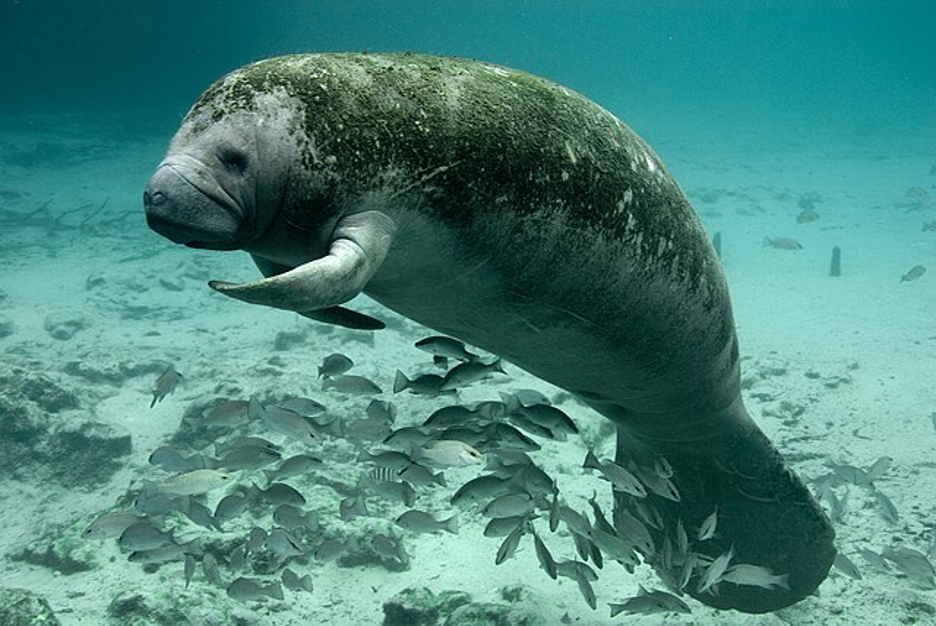
Their small eyes have a membrane that can cover the eyes for protection. The ear openings are small and they have no external lobes. Manatees have a flexible lip pad that is used to move food into their mouth.
Manatees are long-lived and reproduce slowly. Age estimates based on growth rings in ear bones indicate life spans of up to 59 years, and at least one manatee has survived more than 69 years in captivity.
Swimming and Breathing
Like other mammals, manatees breathe air. Nostrils are located above the snout and have valves that tightly close when the manatee is under water. They can hold their breath up to 20 minutes when resting, but when active they surface to breathe every three to five minutes. The manatee's snout is often the only part of its body that emerges out of the water when it breathes.
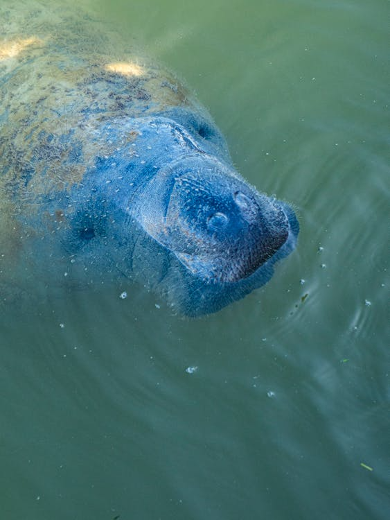
Manatees have two fore-limb flippers that they use for steering movements and to hold vegetation while eating and a large, round, flattened paddle-shaped tail that is used in an up and down morion to propel themselves forward. Strong swimmers, they can reach speeds of 15 miles per hour in short bursts.
Manatees rest from 2 to 12 hours a day either suspended near the water's surface or lying on the bottom in shallow areas, usually for several hours at a time.
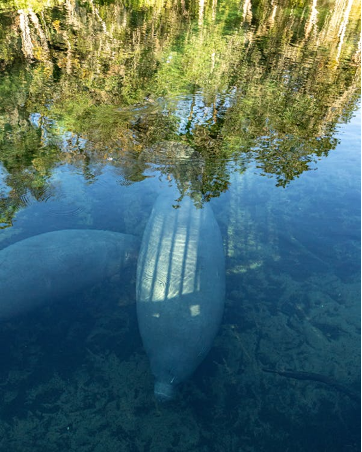
Gestation and Babies
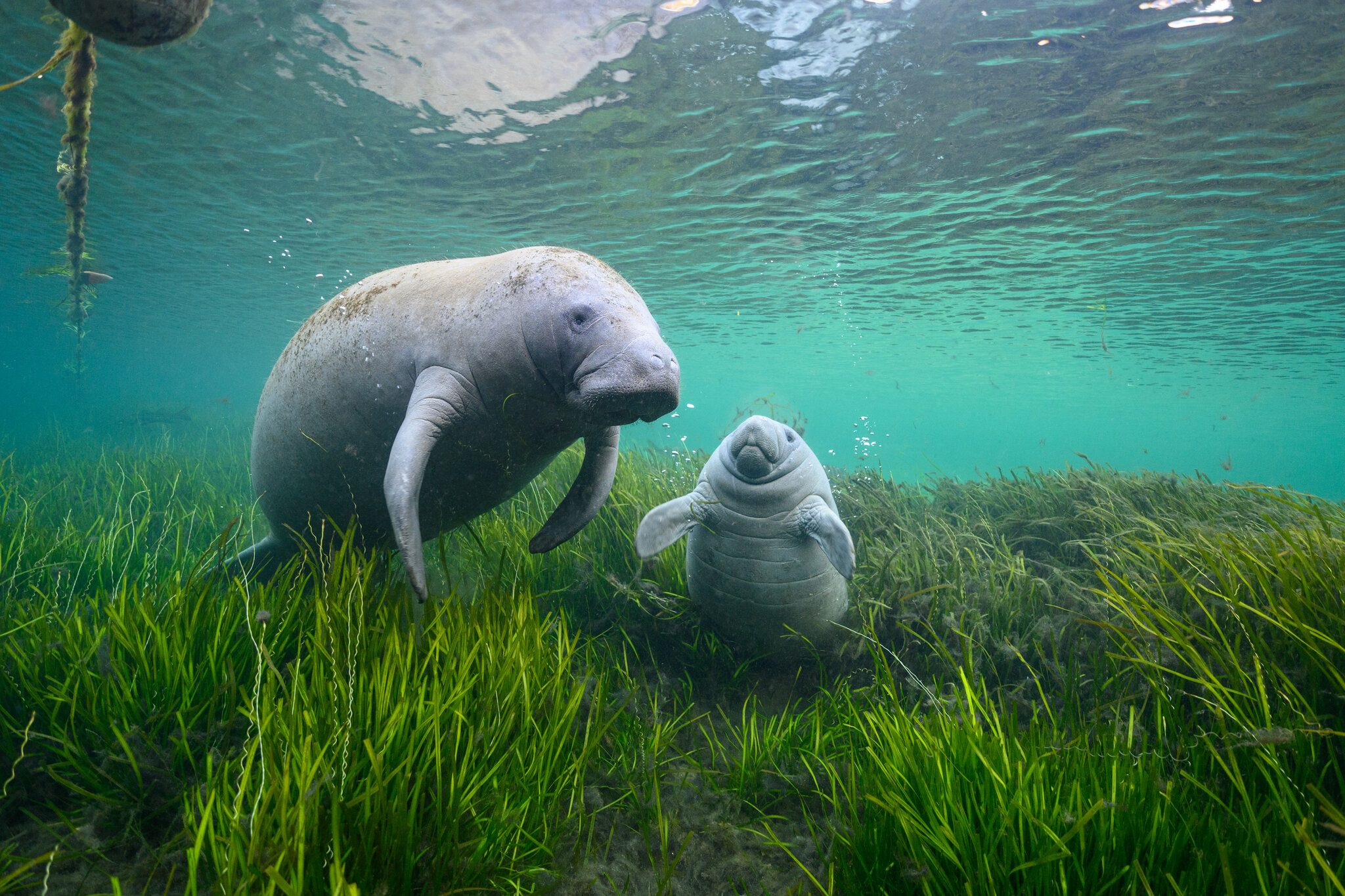
Females (cows) reach sexual maturity between three to five years and give birth to their first calf between the ages of four and seven years old, while males (bulls) reach sexual maturity between five to seven years. During the breeding season, bulls gather and pursue a cow to form a mating group and breed at different times. Bulls are not part of the family unit and will leave a cow alone after her breeding period is over.
Manatees can breed and give birth throughout the year; however, birthing usually peaks in the spring. They have a low reproductive rate, giving birth to an average of one calf every three to five years, with twins occurring rarely.
Females have a 12-13 month gestation time, and when born, the baby will weigh nearly 66 pounds.
Although they begin eating plants when very young, the calf will stay with the mother for up to two years nursing from mammaries located under their pectoral fins. The relationship between a mother and baby is the strongest social bond created by manatees.
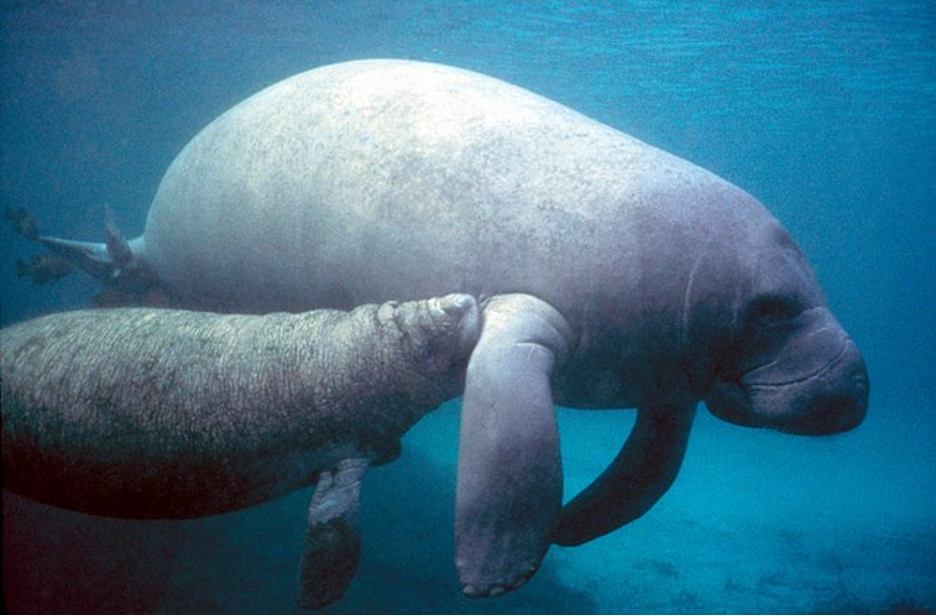
Diet and Digestion
Manatees are aquatic herbivores (plant-eaters). Also known as "sea cows," these herbivores usually spend up to eight hours a day grazing on seagrasses and other marine or freshwater vegetation, eating up to ten percent of their body weight in aquatic vegetation each day.
Manatees are uniquely adapted for eating aquatic plants. The manatee’s large lips are prehensile and studded with specialized sensory bristles and hairs (vibrissae) for discriminating between and manipulating food plants.
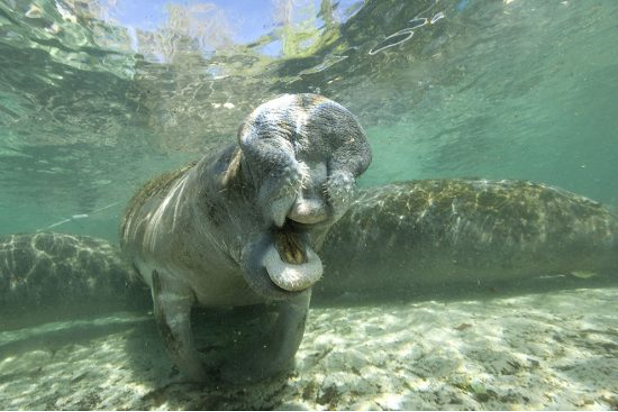
To handle such a diet, manatees are hindgut digesters (like horses) and have intestines as long as 100 feet.
The teeth have also evolved in response to dietary demands. To counter abrasion from ingested sand and silica, manatees constantly grow new molars. These teeth progress from the rear of the jaws forward as older, worn teeth drop out at the front of the mouth. Unlike almost all other mammals, tooth replacement occurs throughout life.